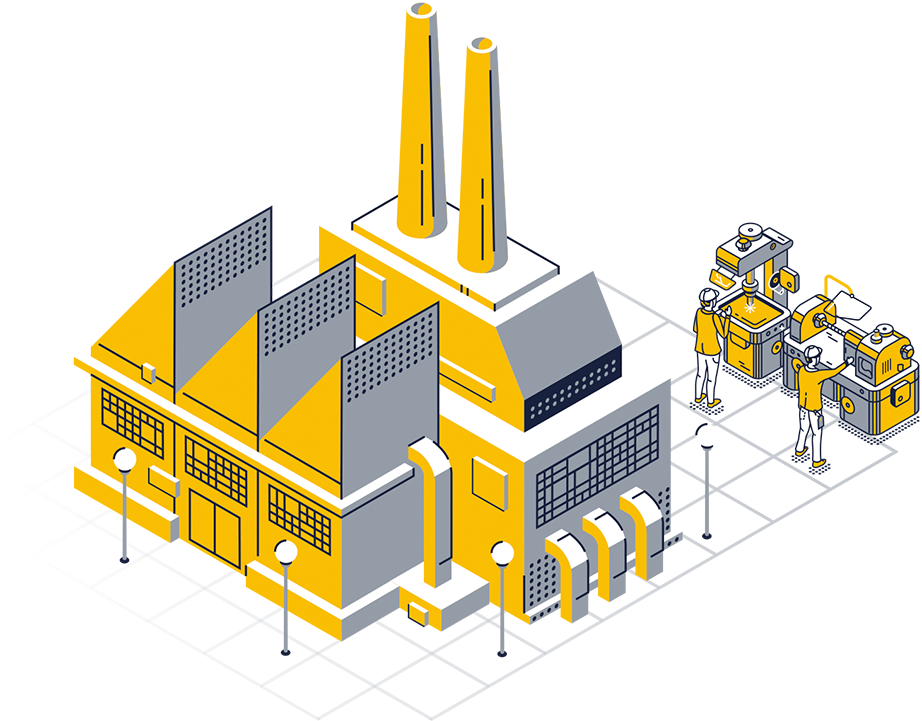November 30, 2016
By: Lyat Avidor Peleg
It’s Time for Evolution!
For some years now, there are rumors that change is in the air: “Industry 4.0”, “digitizing the industry”, “IIOT”, are but a few examples of buzz words we’ve been hearing for the past few years. Headlines dated three and four years back foretell that Predictive Maintenance is embracing analytics (here). Although the rumors are in the air for some time, we now feel a tremendous change. Now it’s time, and let us share with you why.
Let’s begin with the economy. Years of slow economic growth forced tightening one’s belt. Lowering expenses, getting rid of all excess fats, firing personnel, and focusing on production became mandatory. During the 11-year period from 2003 to 2013, the chemical industry in the European Union had an average production growth rate of 0.6%. Just a little bit more than the entire manufacturing which was up 0.3%. EU chemical industry production in 2012 declined by 2.3% compared with 2011. Recovery was slow in 2013, and also in 2014 production levels were slow and sales stagnant (Eurostat and Cefic Chemdata International(2014), slide 23). After applying all other measures, manufacturers are now looking for more sophisticated ways to save money. Manufacturers realize they can apply the sensors data they collect, and is mounted in their database anyway, to achieve great maintenance savings and additional production, while keeping all employees on-board.
It is important for plant managers to understand that the investment in analyzing the data for Predictive Maintenance cannot be postponed. Their operation people are always, busy, have daily problem to deal with, and there always seem to be something more urgent, or not enough people to run the project. But lowering maintenance cost to a minimum, minimizing failure, and being reliable is precisely the plan for a leaner, cost-minded plant.
In addition, past solutions were not good enough. The previous Predictive Maintenance solutions triggered thousands of false positives a day, which operators, as well as plant managers, had become numb to. Today, the reliability of the solutions, such as Precognize, increased immensely and it provides three to four true alerts a week. This significant cut down of noise enables to address the real problems timely and effectively.
And there is something else. Perhaps the key reason for withholding change is due to organizational culture. Embracing change is always a challenge. More so in a conservative environment where work habits, rules, and regulations had been nurtured and cultivated for years. Bear in mind that the average age of a plant manager is 58, 17% are over 60, and only 2.3% are under 30 (here) . It is important to understand that knowledge is disappearing as operation people grow older and retire. The intimate knowledge of the asset, the ability to detect failures as a result of years of experience, will fade away eventually. Their knowledge is essential for implementation of any analytical solution, especially for Predictive Maintenance. The experienced people should not be viewed as a stopper for a change, but as a critical driver of the transition.
We believe that the best way to win the trust of the people of the industry is to make them part of the solution, not the problem. Do not offer them a black box, but harness the experts’ knowledge and draw on their experience. For example, we at Precognize, embed the experts’ knowledge of the plant into a mathematical graph when implementing the system. By applying a mathematical graph on top of the machine learning, Precognize transforms real-time data from hundreds of sensors, into a few actionable alerts. Customer use cases demonstrate that Precognize’s innovative solution reduces maintenance budget substantially by preventing machine failure, saving time spent on false alarms, and calling off the need for several backup systems. The reliability of the plant depends on pursuing the best solutions that are offered today. One cannot stay behind.
The landscape of the industry keeps changing: emerging markets, technological breakthroughs, challenges, and opportunities. To succeed in this ever-changing environment, it is key to look for cutting-edge solutions in order to ride the wave of the digitalization of the industry and not get swamped by it.





